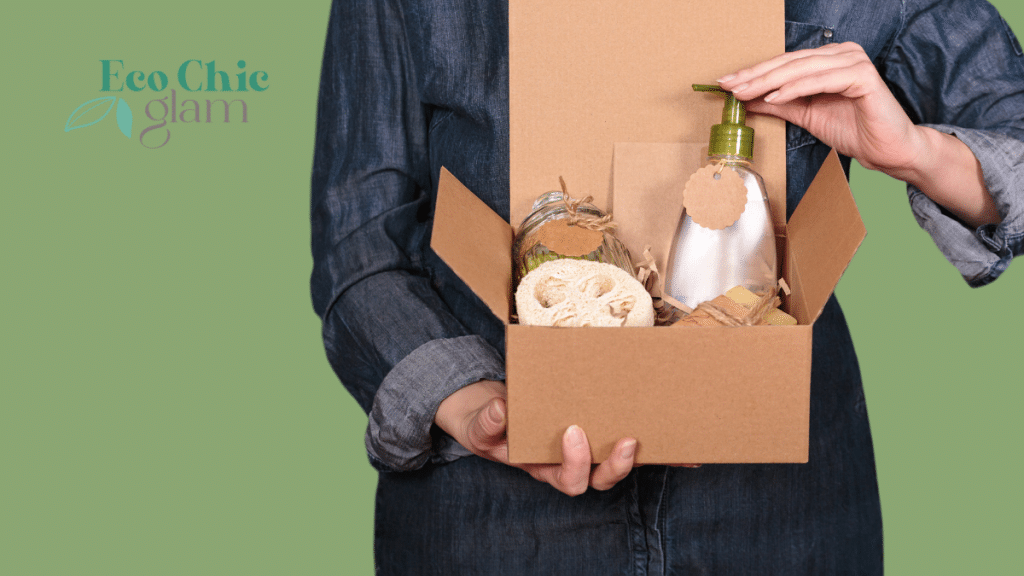Sustainable. Clean. Eco-friendly. Ethical.
Beauty brands throw around these buzzwords like confetti—but what do they really mean?
If you’re tired of greenwashing and want to know what makes a beauty brand actually sustainable, you’re in the right place. 🌿
Here’s how to spot the real deal—from packaging and ingredients to ethics and impact.

🌱 1. Sustainable Sourcing (No Greenwashing Allowed)
A truly sustainable brand doesn’t just care about how a product looks on the shelf—it cares where its ingredients come from.
✅ Look for:
- Fair-trade certified ingredients
- Responsibly harvested botanicals
- Organic farming practices
- Clear sourcing information (not hidden in fine print)
💡 Transparency is key: If a brand won’t tell you where an ingredient came from, that’s a red flag.
♻️ 2. Eco-Friendly Packaging
Packaging makes up a huge chunk of beauty industry waste. A real sustainable brand finds smart, waste-free solutions.
✅ Look for:
- Refillable or reusable packaging
- Glass, aluminum, or biodegradable materials
- Minimal or plastic-free shipping
✨ Bonus points: Brands that offer recycling take-back programs or carbon-neutral shipping!
🧴 3. Clean, Non-Toxic Formulas
Sustainability isn’t just about the planet—it’s about you, too. A good brand avoids harmful ingredients and chooses safer, natural, or plant-based alternatives.
✅ Avoid:
- Parabens
- Phthalates
- Sulfates (SLS/SLES)
- Synthetic fragrances
- Formaldehyde-releasing preservatives
💡 Fun fact: Vegan and cruelty-free doesn’t always mean clean—always read the label!
👩🔬 4. Ethical Testing & Labor Practices
A brand that’s sustainable should be ethical in every way—not just eco-friendly.
✅ Look for:
- Cruelty-free certifications (Leaping Bunny, PETA)
- No animal testing—anywhere in the supply chain
- Ethical labor practices (no child labor, fair wages)
💡 Pro tip: If a brand sells in mainland China (where animal testing is often required), it’s likely not cruelty-free.
🌍 5. Social & Environmental Impact
The best beauty brands don’t just sell products—they take responsibility for their impact.
✅ Look for brands that:
- Give back to the planet (tree planting, ocean cleanups)
- Support local or marginalized communities
- Publish annual sustainability reports
- Commit to carbon neutrality
✨ True sustainability = people + planet + purpose.
🙋♀️ FAQs
Q1: Is “clean beauty” the same as “sustainable beauty”?
Not exactly. Clean beauty focuses on safe, non-toxic ingredients, while sustainable beauty also considers the environment, packaging, sourcing, and social impact.
Q2: How can I avoid falling for greenwashing?
Always check certifications, ingredient lists, and brand transparency. If a brand makes big claims with no proof or details—it’s likely greenwashing.
Q3: What certifications should I look for?
Look for trusted ones like USDA Organic, Leaping Bunny, Ecocert, Fair Trade, Carbon Neutral, and B Corp.
✨ Final Thoughts: Choose Better, Not More
A truly sustainable beauty brand doesn’t just look green—it acts green in every step of the process. It’s transparent, thoughtful, ethical, and responsible.
You don’t need 20 eco-products—you need a few that truly align with your values.
✨ Follow us on social media for more deep dives into sustainable beauty, zero-waste swaps, and conscious product guides
🌱 Visit EcoChicGlam.com to explore brands that actually walk the walk—not just talk the talk

